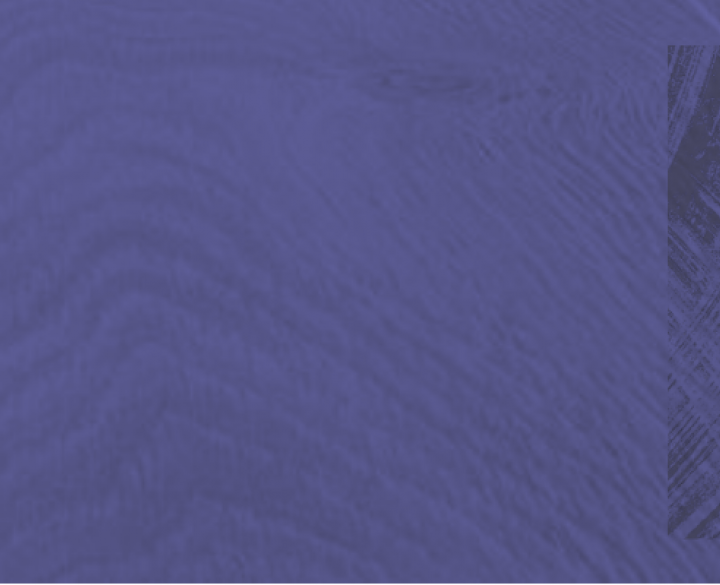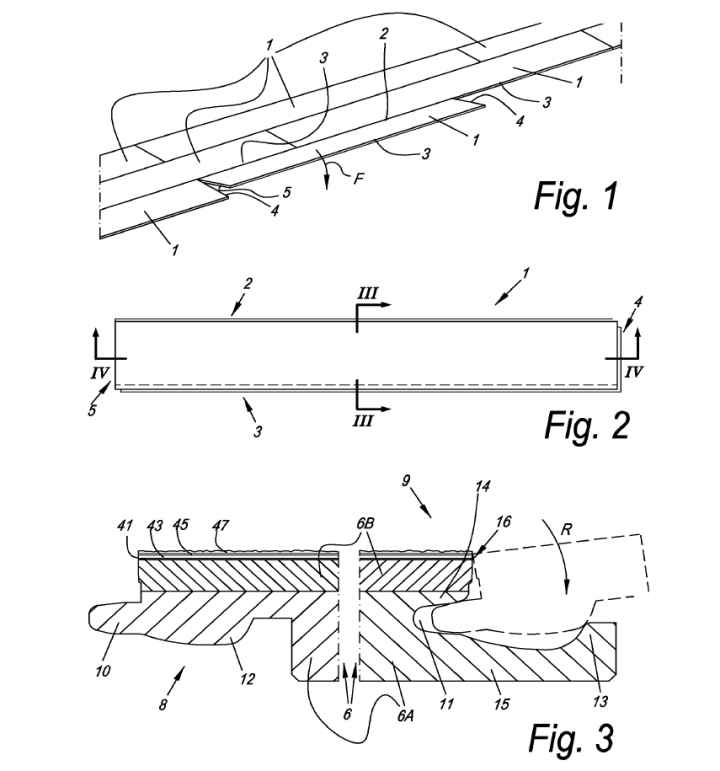Applicant: FLOORING INDUSTRIES Sàrl
Inventors: Benjamin CLEMENT, Sam LEDEGEN
Patent number: WO2021/250487
The invention aims to provide decorative panels (imitation of wood, natural stone, or ceramics) that have antimicrobial properties, high wear resistance, and are easy to clean.
Solution
The decorative panel comprises a substrate, a decorative layer, and a cover layer, which contains a lacquer, containing (long-lasting) antimicrobial additives that are not affected by use and environmental conditions. The lacquer comprises an acrylate and/or a methacrylate matrix that allows a better adhesion of the lacquer to the decorative panel. The matrix is partially cured (UV irradiation and/or electron beam). Photo-initiators are built into the lacquer. The amount of antimicrobial additives in the lacquer is between 0.2 and 2% by weight. The optional adhesive layer is thinner than 5 pm and comprises antimicrobial additives. A thin adhesive layer is advantageous in that the transparency is minimally affected, maintaining the texture in the panel.
The lacquer comprises less than 1% by weight of a matting agent. The low content of matting agents - and preferably the absence thereof - improves the antimicrobial action of the antimicrobial additive and reduces the amount of antimicrobial additives needed. Matting agents and open pores in the acrylate matrix that arise due to a high content of matting agents can contain dirt and impurities; such dirt and/or impurities can stimulate microbial growth.
The decorative panel is produced by:
- a substrate provided with a decorative layer, and optionally a transparent layer, preferably a transparent polyvinyl chloride layer
- optional adhesive layer
- a lacquer, comprising (meth)acrylate oligomers and/or monomers, antimicrobial additives, and optionally thermo-initiators
- at least partial curing of the lacquer by means of a hot-pressing treatment or by UV irradiation.
The antimicrobial additives in the wear layer are selected from one or more of particles including silver components, quaternary ammonium salts, quaternary ammonium groups built into the melamine resin of the wear layer, particles or additives that comprise quaternary ammonium groups, metallic silver particles, silver salts, silver complexes, silver chelates, copper salts, copper and alloys thereof (such as brass, bronze, copper- nickel, copper-nickel-zinc), zinc oxide, essential oils, oleoresins (such as linalool or thymol), polybiguanides, chitosan, isothiazolinone, antibiotics, or trichloromethylsulfenyl-containing fungicides, silver adsorbed to silicon oxide, silver chloride adsorbed to titanium dioxide, silver nitrate, silver sodium hydrogen zirconium phosphate, silver zinc zeolite, silver copper zeolite, silver phosphate glass, and silver borosilicate glass.
The decorative layer contains antimicrobial additives both above and below its paper layer. The antimicrobial additives in the wear layer are the same as the antimicrobial additives in the decor layer. If antimicrobial additives are present in both the wear layer and the decorative layer, a longer-lasting antimicrobial effect is achieved.
The wear layer comprises particles that increase the wear resistance, and preferably, these particles are selected from one or more of nanosilicate, aluminum oxide and diamond. This provides a synergistic effect for the durability of the antimicrobial action.
The decorative panel comprises a substrate and a top layer, wherein the top layer comprises a decorative layer and a wear layer. At least one of its side edges comprises an impregnating agent or a coating comprising antimicrobial additives. The side edges of the decorative panel may be sensitive to the penetration of moisture and/or impurities.
The impregnating agent or the coating provides the side edge(s) of the panel with water-repellent properties over at least a portion of the height of the side edge(s). This improves the antimicrobial action because moisture that could comprise microbes or bacteria or stimulate their growth is prevented from penetrating at the side edges of the decorative panel.
The decorative panel also comprises
- a wood-based decorative layer to which at least one lacquer layer is applied, wherein the at least one lacquer layer comprises at least one lacquer layer that comprises antimicrobial additives.
- the multiple lacquer layers are applied to the wood-based decorative layer, wherein at least one lacquer layer comprises particles that increase the wear resistance - selected from one or more of nanosilicate, aluminum oxide - for example in the form of corundum - and diamond, more preferably synthetic diamond. The lacquer layer comprising particles that increase the wear resistance also comprise(s) antimicrobial additives. The substrate in such embodiments can be wood-based but can also be a thermoplastic substrate or a chipboard or a wood fiberboard or a mineral or mineral panel.
- a decorative layer and a wear layer. Even if the decorative panel comprises a decorative layer that comprises antimicrobial additives, the lower edge areas are critical zones, particularly if they do not or only partially comprise the decorative layer and the wear layer. For this reason, it is definitely advantageous in such situations to provide a lacquer layer on the lower edge areas that comprises antimicrobial additives. In a preferred embodiment, the decorative panel comprises a decorative layer, a wear layer and a substrate, wherein the substrate comprises one or more of: a wood fiberboard, a chipboard, one or more layers of wood, one or more thermoplastic layers which may or may not comprise fillers, a mineral panel.
- a first pair of opposite edges with coupling components, substantially in the form of male and female coupling components, for coupling two such panels to each other at their first pair of opposite edges, wherein the coupling components are provided with interlocking components.
- the antimicrobial additives have virus-killing activity. This means that the antimicrobial agents ensure that any viruses present on the surface of the decorative panel have a shorter life than they would if the decorative panel did not comprise these antimicrobial additives. The use of silver components that comprise silver in ionic form provides the specific advantage that such antimicrobial additives do not leach out, and thus maintain their antimicrobial action over time, even in frequent wet cleaning of the decorative panels. In the different aspects of the invention, the use of silver phosphate glass particles is particularly advantageous, because the silver ions that have the antimicrobial action are efficiently embedded in the silver phosphate glass, and the silver phosphate glass is then in turn efficiently embedded in the lacquer. In this manner, silver ions are released in a controlled manner that provide the antimicrobial action, so that the microbial action is maintained in a very long-lasting manner. As silver phosphate glass particles are very efficient in this manner, only a small amount thereof is necessary.
- decorative panels in accordance with any embodiment.
- a substrate, a decorative layer, and a cover layer. The cover layer comprises a lacquer or is composed of a lacquer. The lacquer comprises antimicrobial additives; wherein the lacquer comprises an acrylate matrix and/or a methacrylate matrix.
Instead of a decorative panel, a vinyl on a roll (“sheet vinyl”) could be produced.





